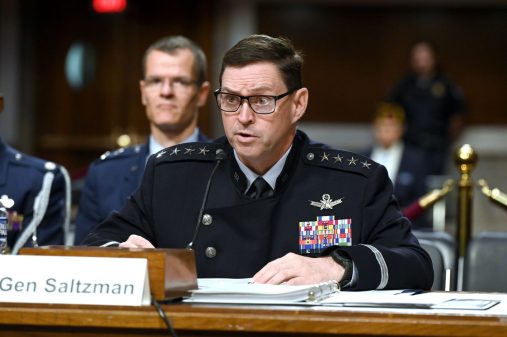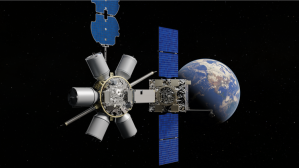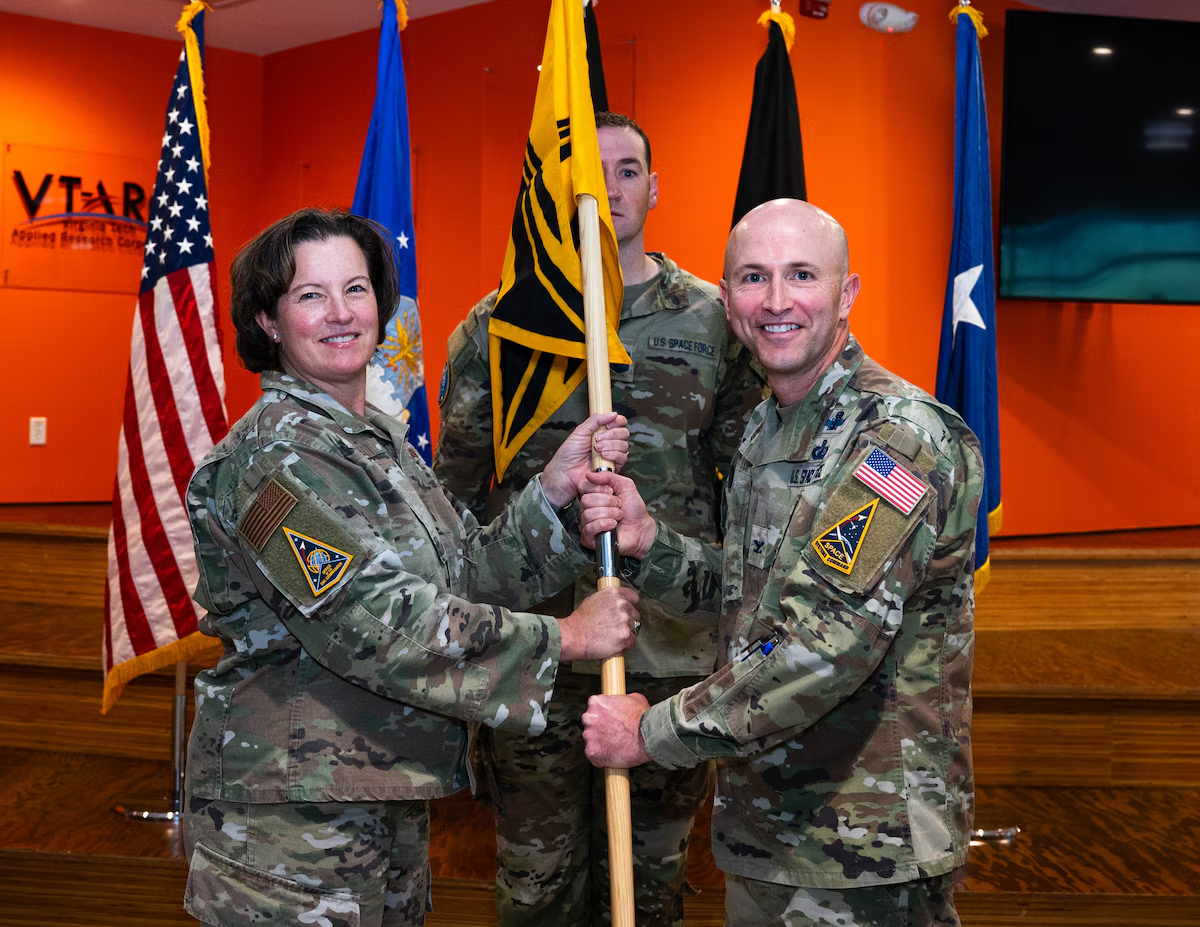Space Force sets sights on major overhaul of how it buys capabilities

NATIONAL HARBOR, Md. — As the Defense Department continues pushing for major procurement reforms, the Space Force is doing its part to evolve how it develops and delivers new capabilities by focusing on operations-focused acquisitions and commercial technology.
“Nearly every corner of the government is clamoring for change from the highest levels on down. Likewise, I hear from industry leaders that they’re excited to partner in accelerating these changes,” Chief of Space Operations Gen. Chance Saltzman said during AFA’s Air, Space and Cyber conference. “We find ourselves in a generational moment. We have the drive, the political will and the necessity to make lasting changes in how we field combat-credible space capabilities.”
Since taking office, Secretary of Defense Pete Hegseth and other leaders at the Pentagon have introduced sweeping initiatives to overhaul and streamline acquisition — from directing use of innovative procurement authorities to terminating the controversial Joint Capabilities Integration and Development System (JCIDS) process.
At the same time, both the House and Senate versions of the 2026 National Defense Authorization Act include provisions for acquisition reform that would lower barriers to entry for commercial technologies and remove regulatory burdens.
And although the Defense Department has sought to improve acquisitions for years, Saltzman emphasized that the current demand signal for modernization represents a “once-in-a-generation opportunity” to enact lasting change within the Space Force — an opportunity that the service is trying to capitalize across several initiatives already underway.
Accelerating delivery
The Space Force recently established new organizational structures for two of its three field commands — both of which prioritize creating stronger relationships between the service’s operations and acquisition communities.
The service first introduced integrated mission deltas (IMDs) with a pilot program in 2023 that has since scaled up across four key mission areas. The units, which fall under Space Operations Command (SpOC), aim to improve readiness by bringing the personnel, training elements and sustainment functions for a single mission area under the purview of a single commander.
The Space Force was previously risk-averse when developing new systems, often conducting rigorous tests with high standards before delivering a capability to operators, Saltzman noted. But to outpace U.S. adversaries, the service is now deploying new systems to IMDs earlier so that they can test them in the field.
“The commander who owns the readiness problems also owns the tools, the resources and authorities to address those problems,” Saltzman said. “This allows us to prioritize the fixes that are most important to operational readiness, test upgrades in ops and improve quickly as we learn from real-world experience.”
The service recently delivered the first of three Deep-space Advanced Radar Capability (DARC) systems to the first site located in Australia. By bringing the first radar into “limited operations,” Saltzman noted the Space Force has expedited testing and is providing space domain awareness data much earlier than if it had used traditional capability acceptance procedures.
The reorganization has also proven beneficial to beleaguered programs, such as the space monitoring software known as the Advanced Tracking and Launch Analysis System (ATLAS). After years of delays, the Space Force in 2024 directed the program be moved to the IMD for space domain awareness so guardians could work on the system and collaborate with developers for improvements.
Less than a year later, the Space Force declared in September that ATLAS achieved operational acceptance.
Established integrated mission deltas are now being paired with the newly introduced system deltas (SYDs) that fall under the service’s acquisition arm, Space Systems Command (SSC). Introduced in July, SYDs are similarly designed to focus on a single mission area and streamline capability development and delivery.
According to the Space Force, programs have been prone to delays when they transition from development and testing to operations. But because each IMD works alongside its designated mission area’s SYD, there is now stronger communication between the service’s acquisitions community and operators that allows for continuous feedback and faster deliveries.
“This direct, mission-focused collaboration should tighten the feedback loop, enabling delivery of combat-credible capabilities more quickly and effectively,” Saltzman said. “This pairing is key to delivering what’s needed, providing combat capabilities sooner and making iterative improvements based on the warfighters’ top priorities.”
Reversing workforce woes
The Space Force’s new unit structures have also better optimized the service’s acquisition workforce, which was drastically reduced over the last year due to the Trump administration’s efforts to downsize the federal government, according to John Bentivegna, chief master sergeant of the Space Force.
“The structure of pairing the system deltas with the integrated mission deltas has really shown some efficiencies in where we are making up for some of those losses, because it’s just a more effective way of managing acquisitions and weapon systems sustainment,” Bentivegna told reporters at the AFA conference.
SSC commander Lt. Gen. Philip Garrant said the Deferred Resignation Program and other budget cuts have reduced the field command’s civilian workforce by 14 percent, or around 600 people — with the biggest impact being to SSC’s contracting professionals.
And while the Space Force has received waivers and authorities from the Office of the Secretary of Defense to hire new talent and reduce an outsized impact, the challenge is now deciding the best way to rebuild the service’s acquisition workforce.
“We could go hire … a retired government contracting officer with a lot of experience that really knows how to do their job,” Garrant said during a media roundtable at the conference. “But if I do that, I’m not developing the next generation of government contracting officers. So there’s a balance there.”
Rebuilding its workforce amid large-scale reforms to federal contracting presents additional challenges, as well. Garrant noted that efforts to rewrite and simplify the Federal Acquisition Regulation means that SSC’s contracting personnel will have more decision autonomy — and thus likely need more experience.
“As I finish flushing out SSC’s structure [with] the system deltas, really the biggest emphasis is putting the resources back into the program office, making my headquarters staff lean and natural,” he said. “Let’s make sure that the small force we have is doing the job, and then over the course of the next six to 18 months, it’ll be implementing that reform that we get and then continuing to develop the workforce to be able to execute.”
Push for commercial tech
As it restructures to improve capability delivery, the Space Force is also in the midst of shifting where it buys its new technology from.
Following directives from Pentagon leadership to prioritize buying commercial solutions, the service conducted a massive review of all its major acquisition programs earlier this year to better understand costs and technical risks.
Eventually, that review led to Maj. Gen. Stephen Purdy, acting assistant secretary of the Air Force for acquisition and integration, asking program managers to analyze whether or not requirements could be fulfilled with commercial tech.
“My pledge to the Space Force was, ‘we’ll get into that and toss it over and see what you think.’ … So we did several of them that we pushed up to requirements. Some passed, some didn’t pass, some are still kind of in holding patterns,” Purdy said.
For some programs, the Space Force was able to see an easy path to transition to commercial solutions.
Such was the case with the follow-on effort to the Geosynchronous Space Situational Awareness Program (GSSAP), known as RG-XX. Rather than hold a traditional competition for the satellites, the review of the program found that its requirements could be fulfilled by purchasing space vehicles and payloads that can be refueled on orbit from commercial vendors.
Not all acquisition programs made the cut, however, as it would either introduce too much risk into the program or take more work than if the service didn’t switch to commercial technology, Purdy said. For example, the Space Force wouldn’t be able to continue services to the broader Joint Force if it made the switch for some of its satellite communications constellations.
“You really have to balance what’s feasible and possible and what’s near commercial, with what’s actually operational, suitable and relative and whatnot,” he said.






